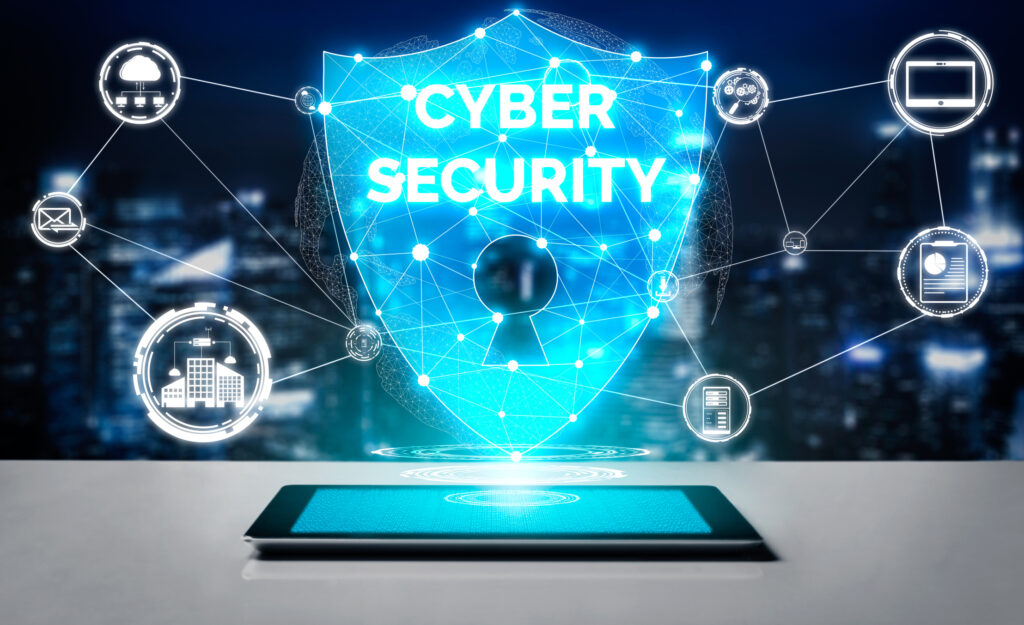
Art Clomera
Vice President, Operations
Federal agencies would be paralyzed without the data centers and software systems that store and process data. But many cyberattacks aren’t politically motivated. Government agencies worldwide are often targeted for the vast quantities of personal information they keep about citizens.
The market for this stolen data is more lucrative than the illegal drug trade, so if you’re a government agency, the question isn’t if but when an attack will happen. As a result, the need for robust information security controls has never been greater. Security controls encompass various measures to shield information systems and address potential vulnerabilities.
This article will explore the range of NIST security controls federal agency security professionals might use and how to assemble the right ones for your needs.
What is a NIST security control?
Security controls are designed to identify and address vulnerabilities within information systems that a cyber attack can exploit. For security professionals, NIST SP 800-53 security controls and the Committee on National Security Systems Instruction (CNSSI) 1253 are the most important tools needed to customize an approach adopted by CNSSI 1253 to define explicitly the associations of confidentiality, integrity, and availability to security controls.
The five categories of NIST security controls
At the most superficial level, security controls either prevent or reduce the impact of a security incident. Within this spectrum are five controls designed to prevent, detect, reverse, discourage, and provide alternative controls when a primary control isn’t available.
Preventative controls
Preventive controls attempt to prevent an incident from occurring. These controls are the first line of defense against cyber threats. Preventative controls can help your company adhere to its policies, guidelines, and standards. They can also enforce the use of services and features, such as IAM, encryption, and logging, to ensure your network is secure. Here are a few examples:
Firewalls
These are network security devices that control incoming and outgoing network traffic and can be used to block unauthorized access to your network.
Encryption
Data is converted into a form that cannot be read without a unique key, which protects sensitive data, such as passwords and credit card numbers.
System hardening
This process makes systems more secure by removing unnecessary software and services and configuring systems with the most secure settings.
Malware detection/ prevention
This software scans your computer for malware, removes it if found, and blocks malware from entering your computer.
Detective controls
Their function is to detect incidents after they have occurred. These security measures can be used to identify phishing, malware infections, and other security incidents responsible for the rapid rise of cyber attacks. What do detective controls look like?
Audit logs
They are records of all system or network activity and valuable tools for tracking down a security incident’s source.
Intrusion detection systems (IDS)
When an IDS detects malicious activity, it sends an alert that a system administrator can investigate.
Security information and event management (SIEM) systems
SIEM systems analyze security logs to detect malicious behavior patterns invisible to single logs.
Vulnerability scanning
Identifying vulnerabilities in systems and networks is crucial for prioritizing security efforts.
Corrective controls
These controls are the last line of defense against cyber threats. Their function is to correct the impact of an incident. Examples of corrective controls include data backups, disaster recovery plans, and incident response plans. They are essential to minimize the damage caused by a cyber attack and to restore normal operations as quickly as possible. Corrective controls can include:
Incident response plans
define how to respond to a security incident.
Patch management
addresses known vulnerabilities and reduces the risk of exploitation.
Backup and recovery plans
are developed to restore systems and data in the event of a cyber attack.
Deterrent controls
These controls attempt to prevent incidents by discouraging individuals from causing security incidents. These controls are designed to reduce or eliminate the motive of unauthorized behaviors and discourage violating security policies.
Security awareness training
Raising awareness and having robust security protocols can reduce the likelihood of human error or negligence leading to security incidents.
Security policies and procedures
They establish rules and guidelines for organizational security, setting clear expectations for employee behavior and system usage.
Safe disposal policies
Policies for securely disposing of sensitive documents prevent information leaks and prevent valuable data from being retrieved from discarded items.
Compensating controls
are used when employed when primary controls are unfeasible or require enhancement and encompass alternative mechanisms to fulfill unmet security requirements
Penetration Testing
Simulated cyberattacks to find system vulnerabilities, with ethical hackers exploiting weaknesses to offer insights for enhanced security measures.
Red Teaming
An advanced testing method that evaluates an organization’s security by mimicking attackers to reveal vulnerabilities that standard assessments might miss.
Honey Pots
A decoy system that attracts potential attackers away from critical systems, allowing organizations to study their tactics without endangering actual sensitive data.
Recovery controls
encompass measures aimed at returning systems and data to their standard state following an incident, including strategies such as backup and recovery plans, disaster recovery plans, and business continuity plans to reinstate functionality post-cyber attack.
Disaster Recovery Testing
This control simulates catastrophic events and evaluates the efficacy of recovery strategies, identifying potential plan gaps and ensuring swift system restoration.
Business Continuity Testing
This control confirms an organization’s ability to maintain critical operations during disruptions, ensuring minimal impact and smooth continuity.
Cloud Backup
This control helps an organization to keep things running well even when there are problems. It ensures that important work can still happen with as little trouble as possible.
Offsite Data Storage
This control safeguards against physical disasters that could impact primary data centers, enabling data recovery from secure remote locations to minimize disruptions.
Why are NIST security controls essential for federal agencies?
The National Institute of Standards and Technology (NIST) Cybersecurity Framework (CSF) and CNSSI 1253 are a set of guidelines, standards, security baselines, and best practices designed to help organizations manage cybersecurity risk. By implementing these controls, federal agencies can enhance their cybersecurity posture and mitigate the risk of cyber threats. For a deeper dive, please read our article about NIST CSF here.
Compliance with federal requirements
NIST compliance is crucial for federal agencies as they must adhere to NIST guidelines and standards, such as NIST 800-53 (which we explored previously), to meet the Federal Information Security Management Act (FISMA) requirements.
Establishing standards
NIST develops cybersecurity standards, guidelines, and best practices to meet the needs of various industries, federal agencies, and the broader public. These standards provide a baseline for organizations to protect their data and systems from cyber threats.
Providing security measures
NIST outlines security measures that organizations should implement to protect their data and ensure the safety of their systems. By conforming to NIST standards, organizations establish a baseline for network safety and can effectively address vulnerabilities.
Supporting Risk Management
NIST security controls, as outlined in Special Publication 800-53, support critical infrastructure, cybersecurity risk management, and overall information security. They help organizations improve their information security standards, risk posture, and cybersecurity framework.
Protecting system integrity
NIST security controls, such as those in the System and Information Integrity (SI) control family, help protect the integrity of systems and information. These controls involve flaw remediation, malicious code protection, system monitoring, and software integrity.
Compliance with NIST standards is an ongoing process, and organizations should regularly review and update their security controls to address evolving threats and vulnerabilities. It’s not the simplest process in the world, so please reach out if you’re experiencing any challenges.
Conducting NIST security controls assessment
NIST Special Publication 800-53 is mandatory for federal agencies and organizations that are part of their supply chain, such as defense contractors. Compliance with NIST SP 800-53 is required by the Federal Information Security Modernization Act (FISMA), which governs federal information security. The publication provides a detailed catalog of security and privacy controls organizations can implement to protect their information systems and data.
Transform Your NIST RMF Compliance with IPKeys
How does IPKeys help tame the beast of RMF compliance? By utilizing advanced analytics platforms developed with the DoD, our solutions automate compliance from end to end. These tools assess systems, identify controls, create documentation, conduct security assessments, track vulnerabilities, and monitor ongoing compliance, leading to time savings, reduced errors, consistent efforts, and efficient compliance maintenance.
Automated assessments
At IPKeys, we offer automation solutions to help organizations save time and money by automating the RMF process. Our automated RMF systems are designed to filter through NIST’s 1,000-plus controls for each of your system components and determine their optimal security configuration. They can then repeatedly test these controls to ensure their continued effectiveness.
Quicker ATO
Our automation solutions help federal agencies reduce the time and effort required to analyze, plan, and test for Authorization to Operate (ATO) for just one system. This can reduce the pressure placed on security personnel or administrators by automating the constant monitoring and mundane reporting that follow.
Security experts
The security experts on the IPKeys team have extensive experience in implementing and assessing security controls and conducting penetration testing and vulnerability assessments. They deeply understand the NIST RMF framework and can help organizations identify, assess, and mitigate security risks.
RMF consultants
Our RMF consultants are certified in NIST RMF and have experience helping federal agencies understand the RMF framework, develop a customized RMF implementation plan, and conduct RMF assessments.
Our solutions have helped many large, medium, and small federal agencies reduce the time and resources required for RMF compliance, streamline their ATOs, and improve their cybersecurity posture. Please drop us a line if you have any questions.
NIST Security controls – common FAQs
What’s an example of a security control?
A firewall is an example of security control. It acts as a barrier between a network and potential unauthorized access, controlling incoming and outgoing traffic based on predetermined security rules.
What are the most common security controls?
Some of the most common security controls include access controls to restrict user permissions, encryption to protect data confidentiality, and regular software patching to address vulnerabilities and ensure system integrity.
How do you assess security controls?
Security controls are assessed through various methods like vulnerability scanning, penetration testing, and audits. These processes involve evaluating the effectiveness of controls in place, identifying weaknesses, and ensuring alignment with industry standards and best practices.
How often should you assess security controls?
The frequency depends on the nature of the organization, its risk profile, industry regulations, and the evolving threat landscape. Regular assessments should ensure that security controls remain effective over time. The NIST Cybersecurity Framework recommends continuous monitoring to ensure its effectiveness.
What specific types of security controls are included in the NIST Cybersecurity Framework?
The framework encompasses various security controls across its five core functions: Identity, Protect, Detect, Respond, and Recover. These controls include access controls, encryption, intrusion detection systems (IDS), incident response plans, data backup, vulnerability assessment, and more. Each function comprises multiple categories and subcategories, offering a comprehensive approach to managing cybersecurity risks.



